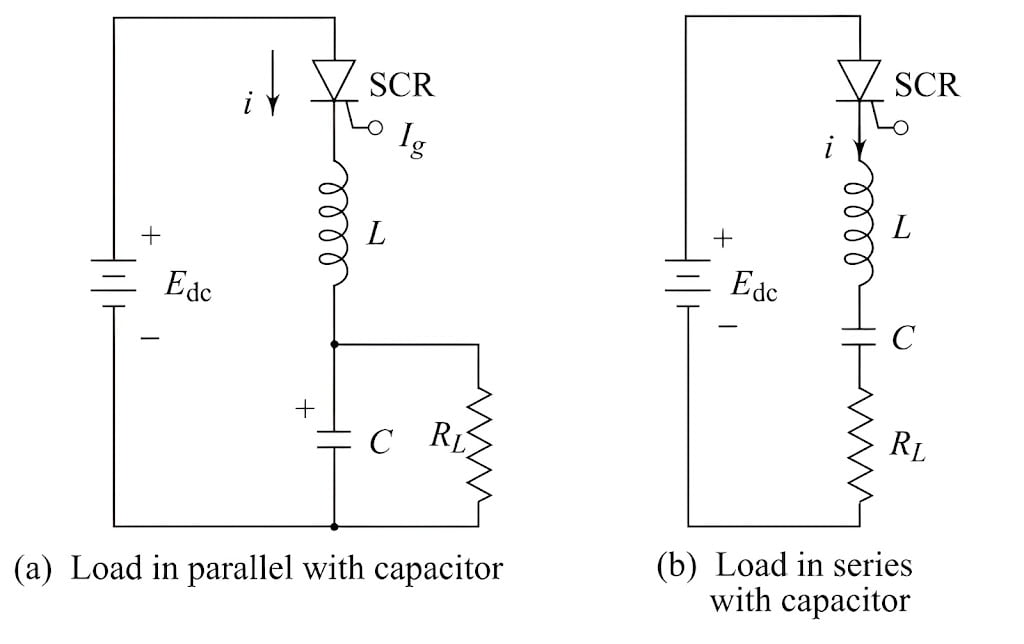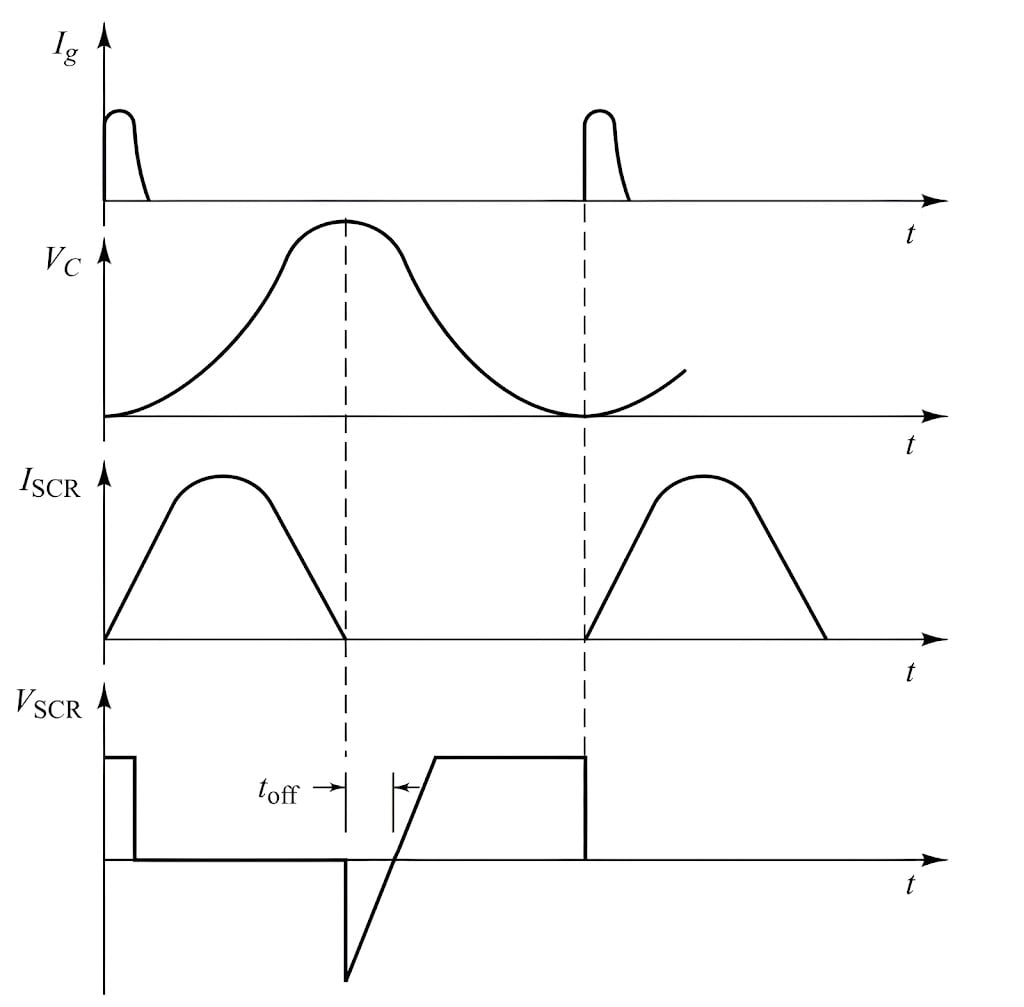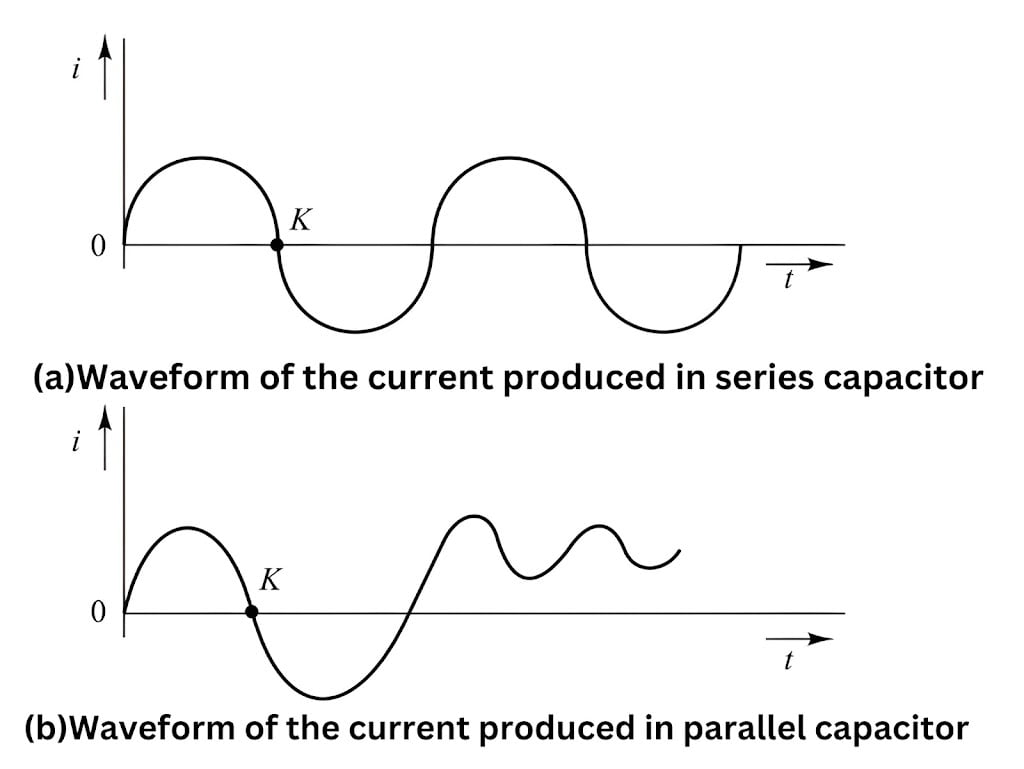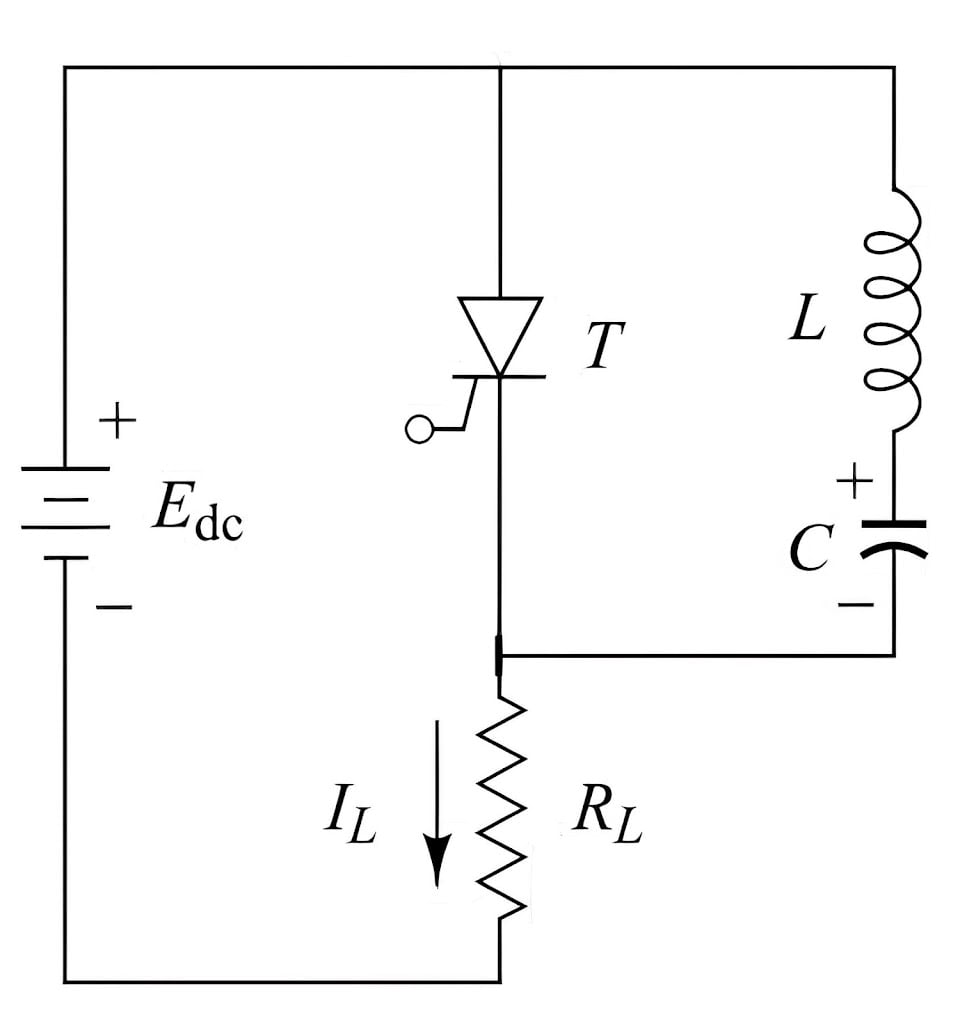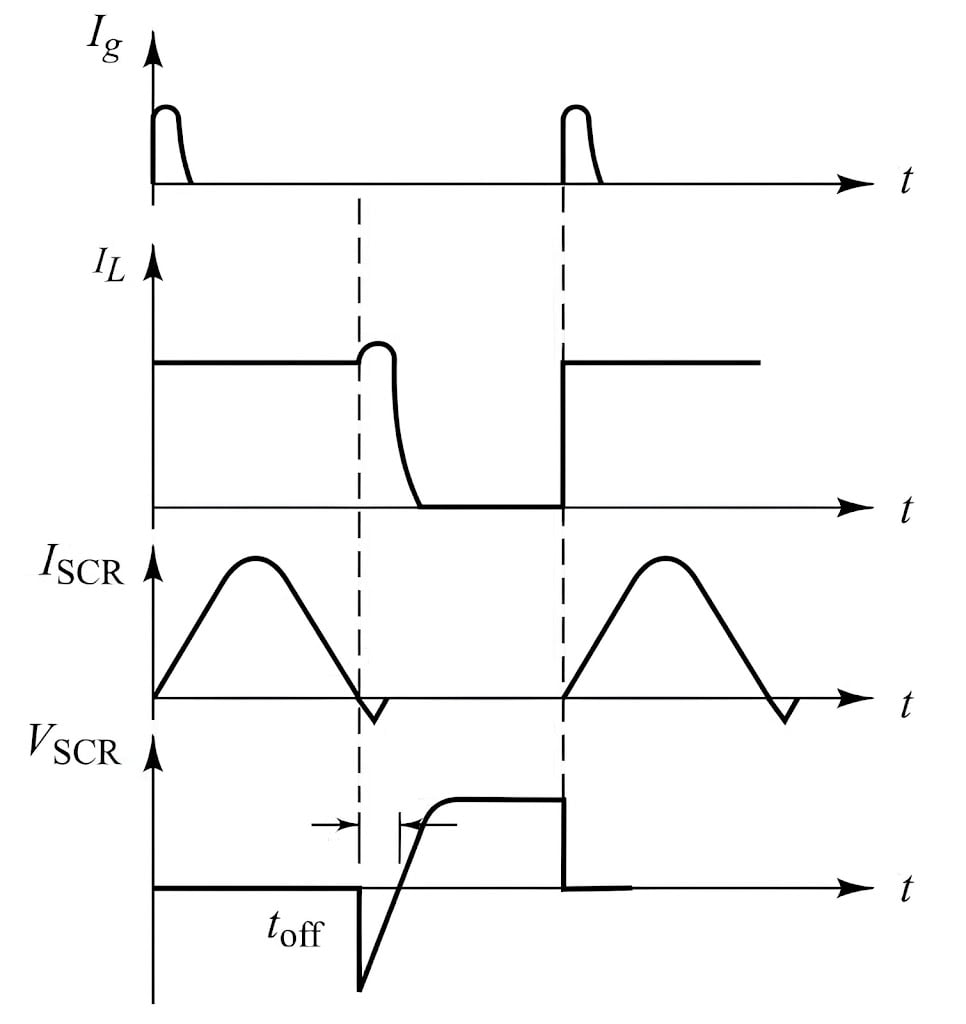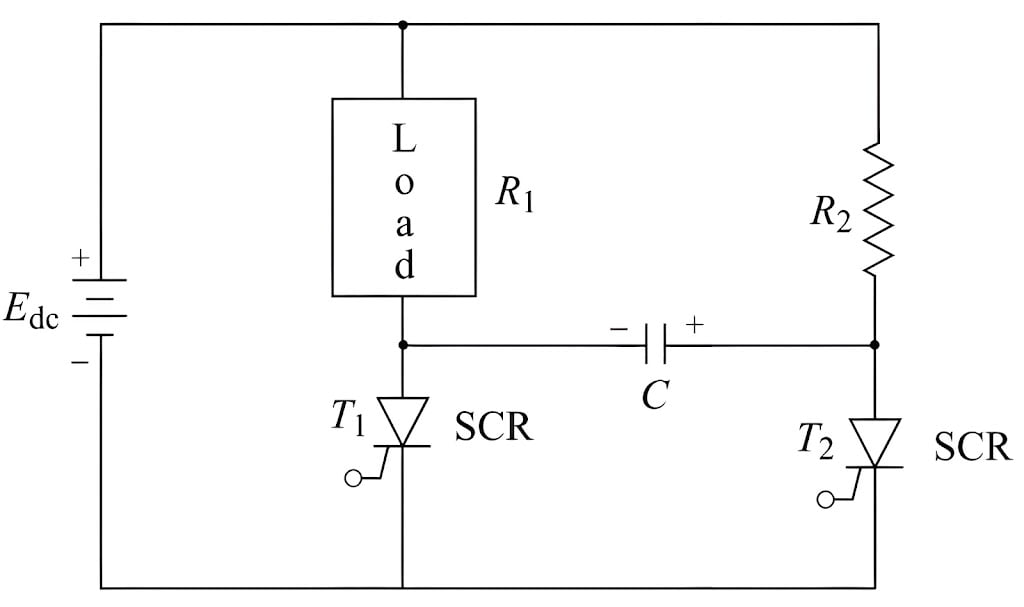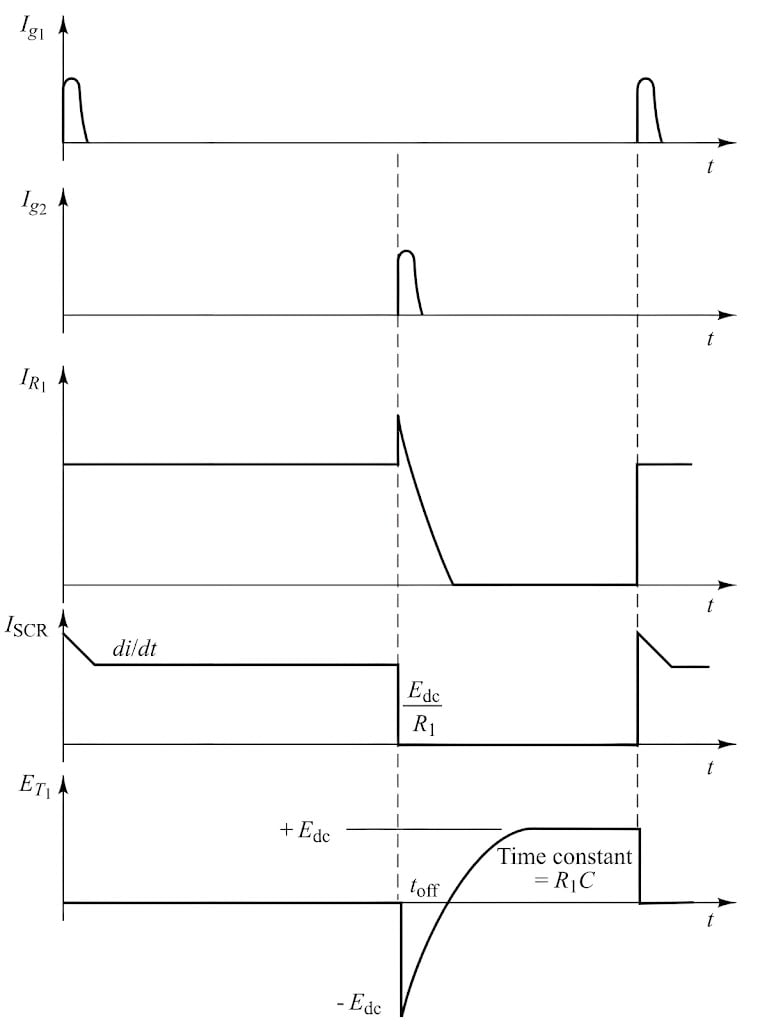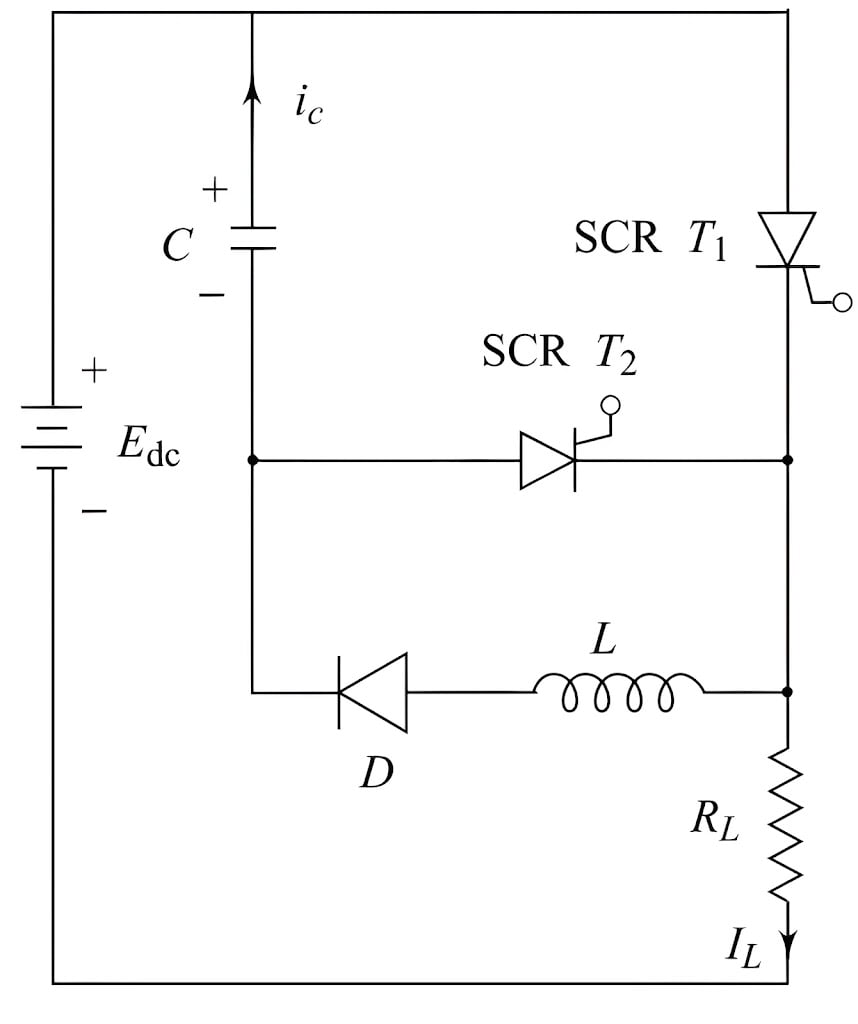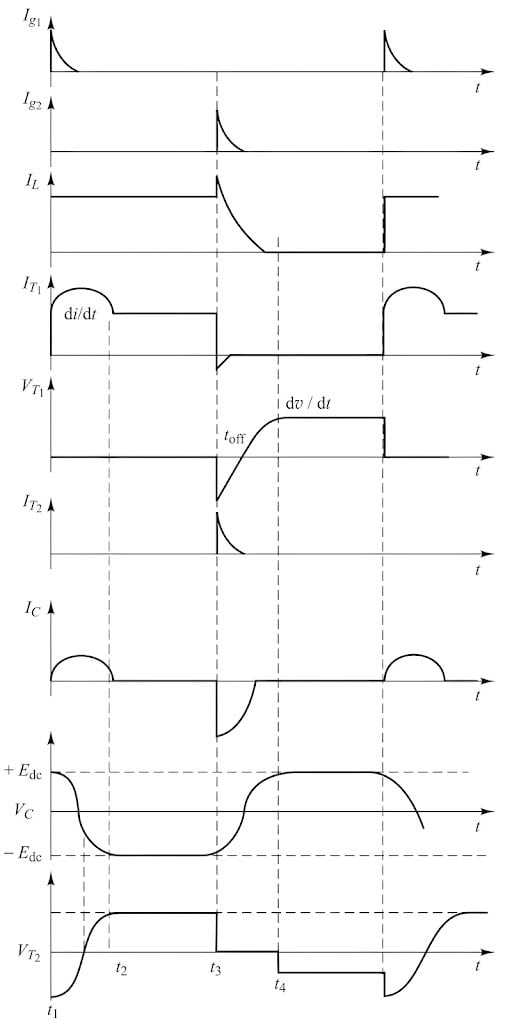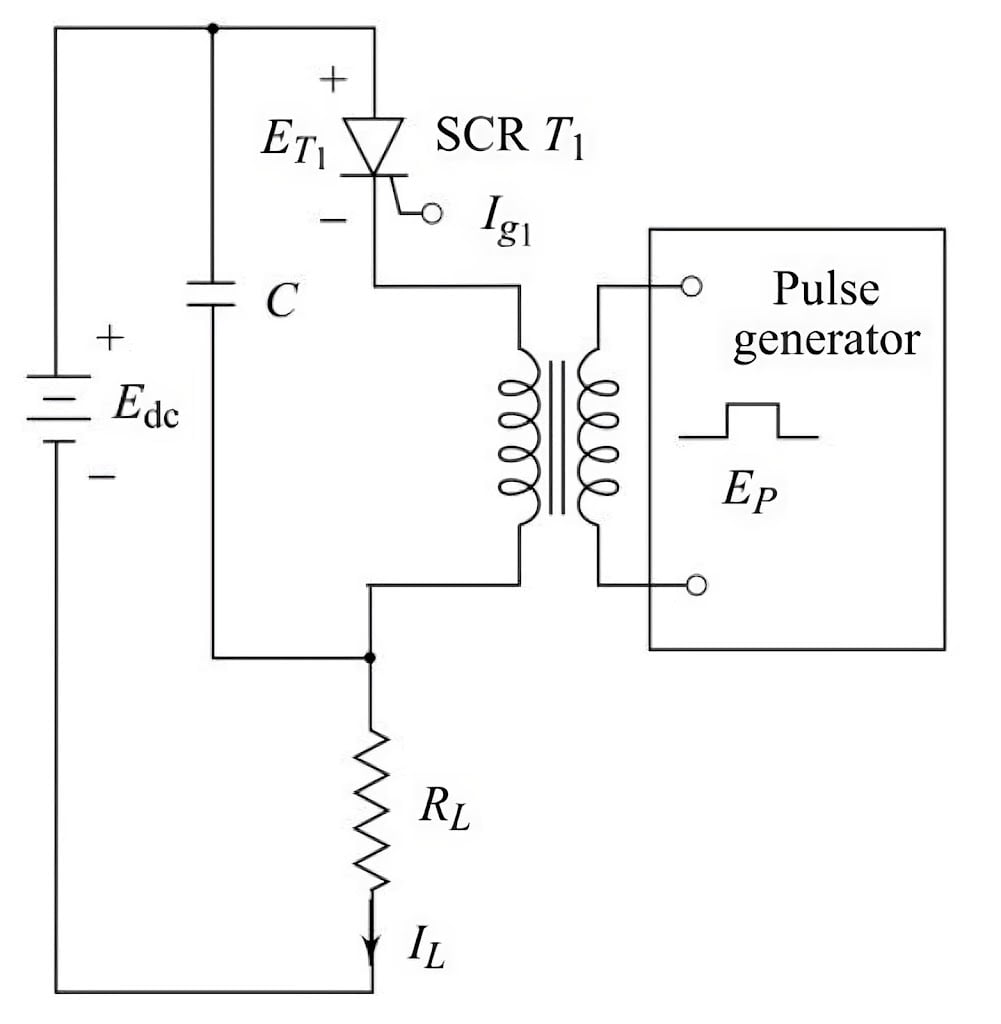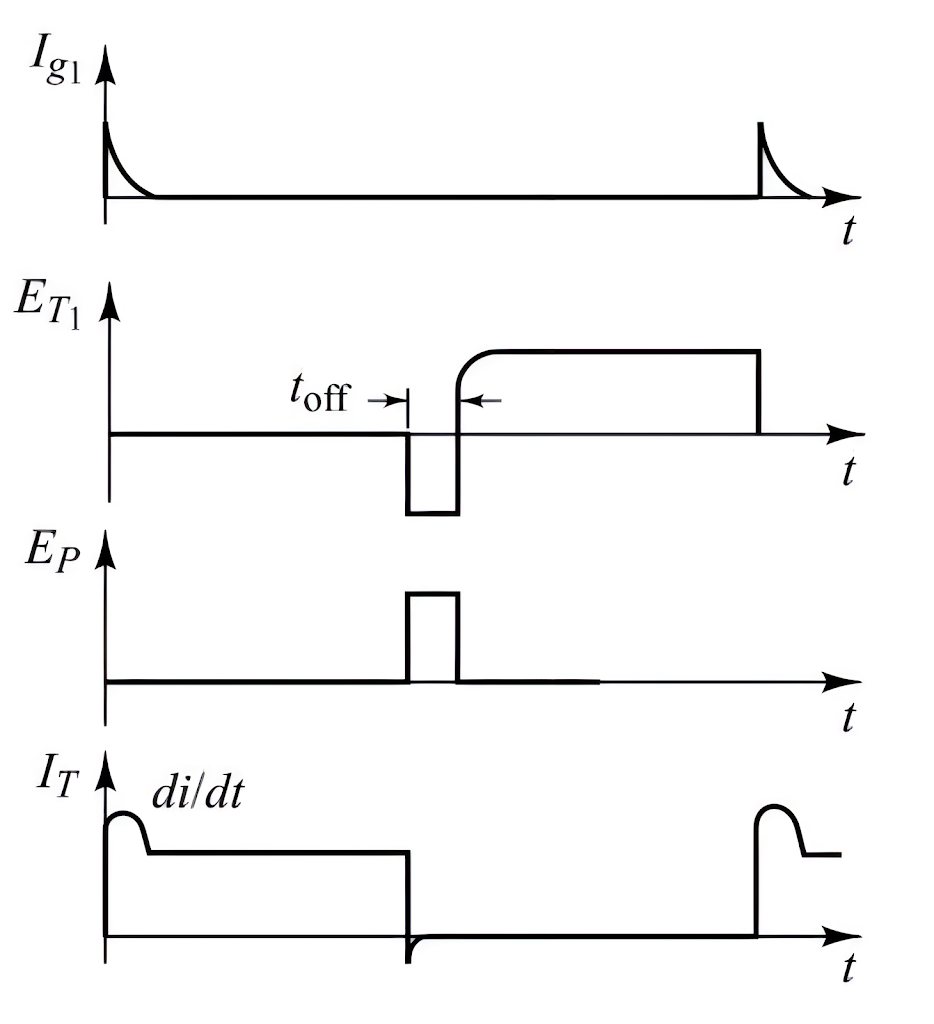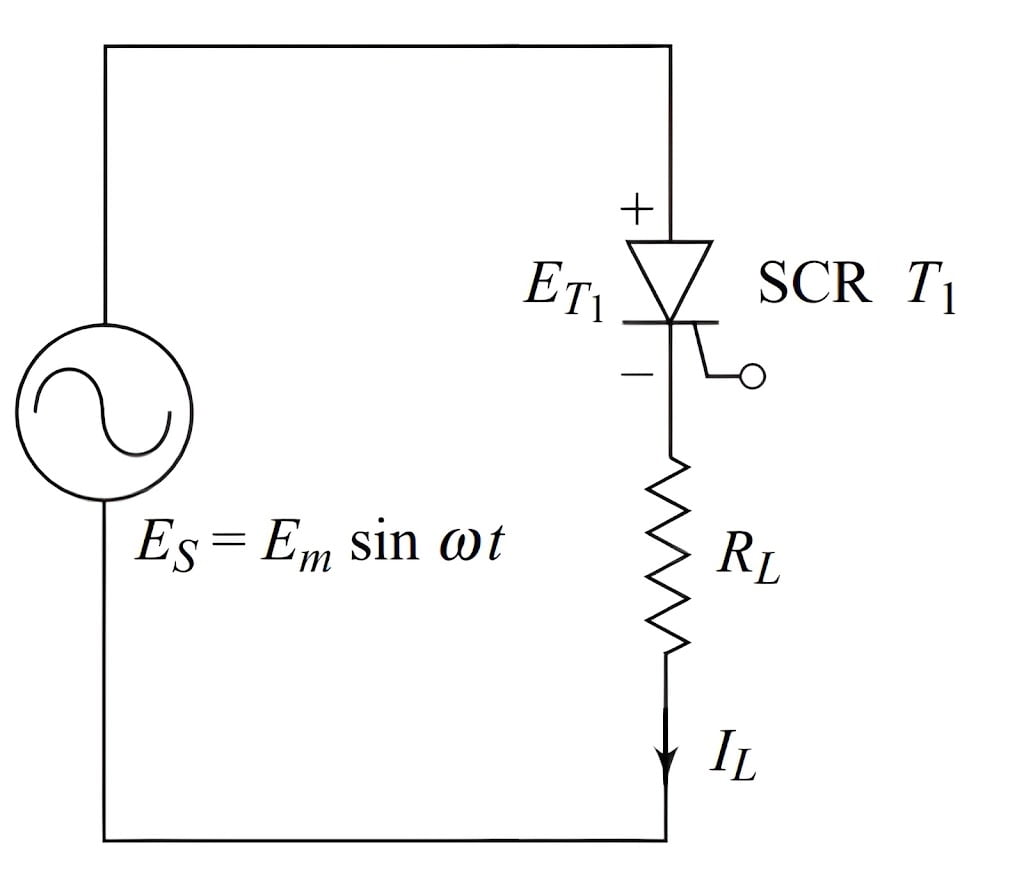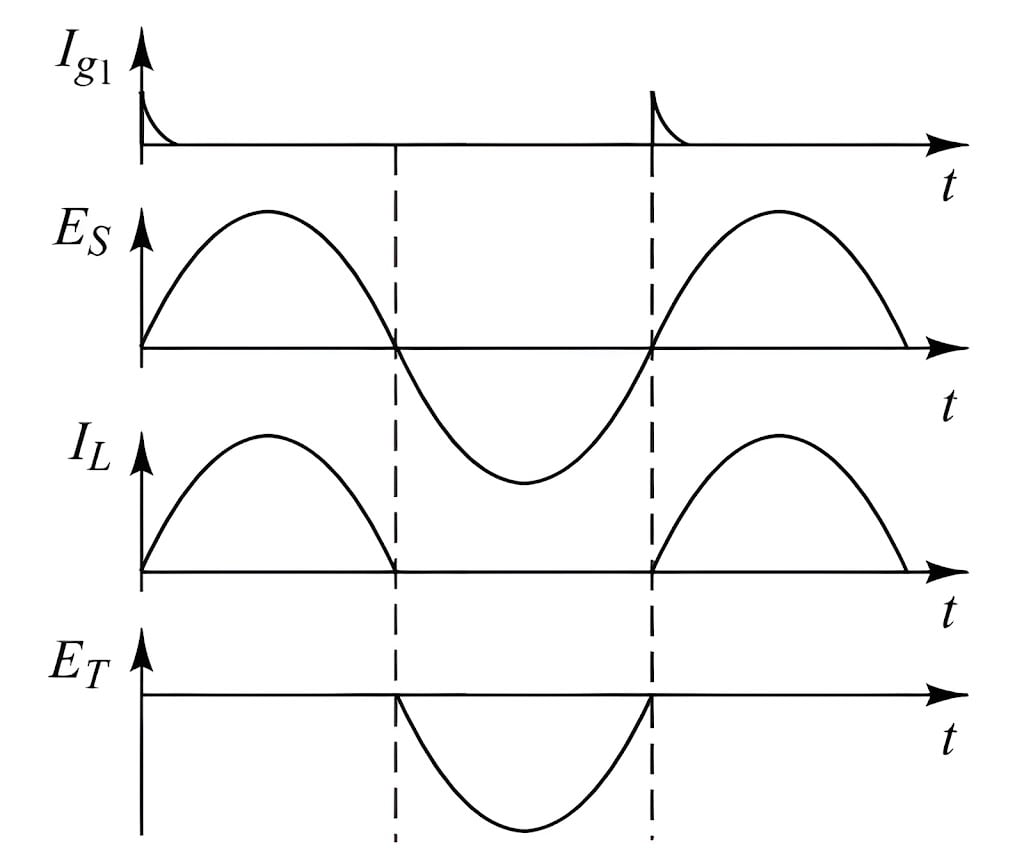Introduction
Thyristor disabling becomes one of the thyristor's operation points (offs or extinguishing the conduction state of thyristor). Knowing different communication techniques, their features and obtaining applications are absolutely necessary for operating with power electronics systems, which are used to generate, transfer, and receiving the power. Here we will tackle in depth the complex issue of commutation with thyristors, covering methods, operation, attributes and as well the wide range of application in number of industries.
Understanding Thyristor Commutation
Thyristor commutation involves throttling of the thyristor conduction mode after it is triggered on. Instead of just letting the current through the thyristor uncontrollably, controlling the commutation phenomenon (such as on-off times) is significant for the correct and safe functioning of the been circuit,therefore the commutation within electrical circuits are necessary. Switching methods of thyristors include options that are diverse but with unique features that are customized for particular applications.
Types of Thyristor commutation
- The term commutation basically means the transfer of current from one path to another. In thyristor circuits, this term is used to describe process of transferring current from one thyristor to another. As explained earlier, it is not possible for a thyristor to turn itself OFF; the circuit in which it is connected must reduce the thyristor current to zero to enable it to turn-off. 'Commutation' is the term to describe the methods of achieving this.
- Commutation is one of the fundamental principles the use of thyristors for control purposes.A thyristor can only operate in two modes: it is either in the OFF state, i.e., open circuit, or in the ON state, i.e., short circuit.By itself it cannot control the level of current or voltage in a circuit.Control can only be achieved by variation in the time thyristors when switched ON and OFF and commutation is central to this switching process.All thyristor circuits,therefore,involve the cyclic or sequential switching of thyristors.The two methods by which a thyristor can be commutated are as follows.
1.Natural Commutation
- The simplest and most widely used method of commutation makes use of the alternating, reversing nature of a.c. voltages to effect the current transfer. We know that in a.c. circuits, the current always passes through zero every half cycle. As the current passes through natural zero, a reverse voltage will simultaneously appear across the device.
- This immediately turns-off the device.This process is called as natural commutation since no external circuit is required for this purpose. This method may use a.c. mains supply voltages or the a.c.voltages generated by local rotating machines or resonant circuits. The line commutated converters and inverters comes under this category.
2.Forced Commutation
- Once thyristors are operating in the ON state, carrying forward current, they can only be turned OFF by reducing the current flowing through them to zero for sufficient time to allow the removal of charged carriers. In case of d.c. circuits,for switching off the thyristors, the forward current should be forced to be zero by means of some external circuits.
- The process is called forced commutation and the external circuits required for it are known as commutation circuits. The components (inductance and capacitance) which constitute the commutating circuits are called as commutating components.
- A reverse voltage is developed across the device by means of a commutating circuit that immediately brings the forward current in the device to zero, thus turning off the device. Producing reliable commutation is a difficult problem to be tackled while designing chopper and inverter circuits. The most important stage in the designing process is choosing a forced turn-off method and deciding its components.
- The classification of the methods of forced commutation is based on the arrangement of the commutating components and the manner in which zero current is obtained in the SCR. There are six basic methods of commutation by which thyristors may be turned OFF.
1.Class A–self Commutation by Resonating the Load
This is also known as resonant commutation. This type of commutation circuit using L-C components-in-series-with the load are shown in Fig. 1. In Fig. 1(a), load R-L is in parallel with the capacitor and in Fig. 1(b) load R-L is in series with the L-C circuit. In this process of commutation, the forward current passing through the device is reduced to less than the level of holding current of the device.Hence, this method is also known as the current commutation method. The waveforms of the thyristor voltage, current and capacitor voltages are shown in Fig. 2.
Figure 2
Figure 3
Figure 4
- The load resistance RL and the commutating components are so selected that their combination forms an underdamped resonant circuit. When such a circuit is excited by a d.c. source, a current of the nature shown in Fig. 2 will be obtained across the device. This current, as evident from its shape, has zero value at the point K where the device is automatically turned OFF.
- Beyond point K, the current is reversed in nature which assures definite commutation of the device.The thyristor when ON carries only the charging current of capacitor C which will soon decay to a valueless than the holding current of the device, when capacitor C is charged up to the supply voltage Edc.This simultaneously switches off the thyristor.The time for switching off the device is determined by the resonant frequency which in turn depends on the values of the commutating components L and C, and the total load resistance.
- This type of commutation circuits are most suitable for high frequency operation, i.e., above 1000 Hz, because of the need for an L-C resonant circuit which carries the full load current. This commutation circuit is used in series inverter.
2.Class B—Self Commutation by an LC Circuit
In this method, the LC resonating circuit is across the SCR and not in series with the load. The commutating circuit is shown in Fig. 5 and the associated waveforms are shown in Fig. 6.
Figure 5
Figure 6
Initially, as soon as the supply voltage `E_{dc}` is applied, the capacitor C starts getting charged with its upper plate positive and the lower plate negative, and it charges up to the voltage `E_{dc}`.
When thyristor T is triggered, the circuit current flows in two directions:
- The load current IL flows through the path `E_{dc}`+-T-RL-`E_{dc}`
- Commutating current `I_c`
- The moment thyristor T is turned ON, capacitor C starts discharging through the path `(C_+)`-L-T-C. When the capacitor C becomes completely discharged,it starts getting charged with reverse polarity. Due to the reverse voltage, a commutating current `I_c` starts flowing which opposes the load current `I_l`. When the commutating current `I_c` is greater than the load current `I_l`, thyristor T becomes turned OFF.When the thyristor T is turned OFF, capacitor C again starts getting charged to its original polarity through L and the load. Thus, when it is fully charged, the thyristor will be ON again.
- Hence, from the above discussion it becomes clear that the thyristor after getting ON for sometime automatically gets OFF and after remaining in OFF state for sometime, it again gets turned ON. This process of switching ON and OFF is a continuous process. The desired frequency of ON and OFF states can be obtained by designing the commutating components as per the requirement.The main application of this process is in d.c. chopper circuits, where the thyristor is required to be in conduction state for a specified duration and then to remain in the OFF state also for a specified duration.
- Morgan chopper circuit using a saturable reactor in place of the ordinary inductor L is a modified arrangement for this process. The circuit has the advantage of longer oscillation period and therefore of more assurance of commutation. In this Class B commutation method, the commutating component does not carry the load current. Both Class A and Class B turn-off circuits are self-commutating types, that is in both of these circuits the SCR turns-off automatically after it has been turned on.
3.Class C—Complementary Commutation (Switching a Charged Capacitor by a Load Carrying SCR)
The class C commutation circuit is shown in Fig. 7. In this method, the main thyristor (SCR `T_1`) that is to be commutated is connected in series with the load. An additional thyristor (SCR `T_2`), called the complementary thyristor is connected in parallel with the main thyristor.
Figure 7
Circuit Operation
1.Mode 0: [Initial-state of circuit]
- Initially, both the thyristors are OFF.Therefore, the states of the devices are,
`T_1`→off, `T_2`→off ∴`E_{c1}`=0
2.Mode 1
- When a triggering pulse is applied to the gate of `T_1`, the thyristor `T_1` is triggered. Therefore, two circuit current, namely, load current `I_l` and charging current `I_c` start flowing. Their paths are,
Load current `I_l`=`E_{dc}`+`R_1`-`T_1`-`E_{dc}`
Charging current `I_c`=`E_{dc}`+`R_2`-`(C_+)`-`(C_-)`-`T_1`-`E_{dc}`
- Capacitor C will get charged by the supply voltage `E_{dc}` with the polarity shown in Fig. 7. The states of circuit components becomes,
`T_1`→on, `T_2`→off ∴`E_{c1}`=`E_{dc}`
3.Mode 2
- When a triggering pulse is applied to the gate of `T_2`, `T_2` will be turned on. As soon as `T_2` is ON,the negative polarity of the capacitor C is applied to the anode of `T_1` and simultaneously,the positive polarity of capacitor C is applied to the cathode. This causes the reverse voltage across the main thyristor `T_1` and immediately turns it off.
- Charging of capacitor C now takes place through the load and its polarity becomes reverse. Therefore, charging path of capacitor C becomes,
`E_{dc+}`-`R_1`-`C_+`-`C_-`-`T_{2left(a-kright)}`-`E_{dc-}`
- Hence, at the end of Mode 2, the states of the devices are
`T_1`→off, `T_2`→on ∴`E_{c1}`=-`E_{dc}`
4.Mode 3
- Now, when thyristor `T_1` is triggered, the discharging current of capacitor turns the complementary thyristor `T_2` OFF. The state of the circuit at the end of this Mode 3 becomes,
`T_1`→on, `T_2`→off ∴`E_{c1}`=`E_{dc}`
- Therefore, this Mode 3 operation is equivalent to Mode 1 operation.
- The waveforms at the various points on the commutation circuit are shown in Fig. 8. An example of this class of commutation is the well known McMurray-Bedford inverter. With the aid of certain accessories,this class is very useful at frequencies below about 1000 Hz. Sure and reliable commutation is the other characteristic of this method.
Figure 8
4.Class D—Auxiliary Commutation (An Auxiliary SCR Switching a
Charged Capacitor)
- Figure 9 shows the typical Class D commutation circuit. In this commutation method, an auxiliary thyristor (`T_2`) is required to commutate the main thyristor (`T_1`), Assuming ideal thyristors and the lossless components, then the waveforms are as in Fig. 10. Here, inductor L is necessary to ensure the correct polarity on capacitor C.
- Thyristor `T_1` and load resistance RL form the power circuit, whereas L, D and `T_2` form the commutation circuit.
Circuit Operation
1.Mode 0: [Initial Operation]
- When the battery `E_{dc}` is connected, no current flows as both thyristors are OFF. Hence, initially, the state of the circuit components becomes,
`T_1`→off,`T_2`→off ∴`E_c`=0
Figure 9
Figure 10
2.Mode 1
- Initially, SCR `T_2` must be triggered first in order to charge the capacitor C with the polarity shown. This capacitor C has the charging path `E_{dc}`+-`C_+`-`C_-`-`T_2`-`R_l`-`E_{dc}`. As soon as capacitor C is fully charged, SCR `T_2` turns-off.
- This is due to the fact that,as the voltage across the capacitor increases, the current through the thyristor `T_2` decreases since capacitor C and thyristor `T_2` form the series circuit.Hence the state of circuit components at the end of Mode 1 becomes,
`T_1`→off,`T_2`→off ∴`E_{c}`=`E_{dc}`
3.Mode 2
- When thyristor `T_1` is triggered, the current flows in two paths.
(a)Load current `I_l` flows through
`E_{dc+}-T_1-R_l-E_{left(-dcright)}`
(b)Commutation current (Capacitor-discharges through) flows through
`C_+-T_1-L-D-C`
- After the capacitor C has completely discharged, its polarity will be reversed,i.e., its upper plate will acquire negative charge and the lower plate will acquirepositive charge. Reverse discharge of capacitor C will not be possible due to the blocking diode D.
- Therefore, at the end of Mode 2, the state of the circuit components becomes,
`T_1`→on,`T_2`→off ∴`E_{c}`=-`E_{dc}`
4.Mode 3
- When the thyristor `T_2` is triggered,capacitor C starts discharging through the path `(C_+)-T_{2left(a kright)}-T_{1left(k-aright)}-(C_-)`.When this discharging current (commutating current `I_c`) becomes more than the load current `I_l`,thyristor `T_1` gets OFF.
- Therefore, at the end of Mode 3, the state of circuit component becomes,
`T_1`→off,`T_2`→on
- Again, capacitor C will charge to the supply voltage with the polarity shown and hence SCR `T_2`gets OFF.Therefore, thyristors `T_1` and `T_2` both get OFF,which is equivalent to Mode 0 operation.
- This type of commutation circuit is very versatile as both time ratio and pulse width regulation is readily incorporated. The commutation energy may readily be transferred to the load and so high efficiency is possible. This method is used in Jone's chopper circuit.
5.Class E—External Pulse Commutation
- In Class E commutation method, the reverse voltage is applied to the current carrying thyristor from an external pulse source. A typical Class E commutation circuit is shown in Fig. 11 and the associated waveforms are shown in Fig. 12. Here, the commutating pulse is applied through a pulse-transformer which is suitably designed to have tight coupling between the primary and secondary.
- It is also designed with a small air gap so as not to saturate when a pulse is applied to its primary. It is capable of carrying the load-current with a small voltage drop compared to the supply voltage. When the commutation of `T_1` is desired, a pulse of duration equal to or slightly greater than the turn-off time specification of the thyristor is applied.
Figure 11
Figure 12
- When the SCR T1 is triggered, current flows through the load RL and the pulse transformer. When a pulse of voltage EP from the pulse-generator is applied to the primary of the pulse transformer, the voltage induced in the secondary appears across thyristor T1 as a reverse voltage and turn it off. Since the induced pulse is of high frequency, the capacitor offers almost zero impedance. After T1 is turned off, the load current decays to zero. Earlier to the commutation, the capacitor voltage remains at a small value of about 1 V.
- This type of commutation method is capable of very high efficiency as minimum energy is required and both time ratio and pulse width regulation are easily incorporated. However, equipment designers have neglected this class for the designing of power circuits.
6.Class F—a.c. Line Commutation
- A typical line commutated circuit is shown in Fig. 13 and its associated waveforms are shown in Fig. 14. If the supply is an alternating voltage, load current will flow during the positive half cycle. During the negative half cycle, the SCR will turn-off due to the negative polarity across it.
- The duration of the half cycle must be longer than the turn-off time of the SCR. The maximum frequency at which this circuit can operate depends on the turn-off time of SCR.
Figure 13
Figure 14
Applications of Thyristor Commutation
Thyristor commutation methods find diverse applications across industries and technologies.
Motor Control Systems
The commutation via a thyristor is used in systems designed to control motors for the purposes of obtaining precisely controlled speed, torque, and direction running on industrial machinery, pumps, fans, and HVAC systems.
Power Supplies
In power supply circuits, the power switches are represented with thyristors that are used as commutated (AC to DC) converters, DC regulators, and control of the voltage (used in battery chargers, UPS systems and telecom equipment).
HVAC and Heating Systems
Thyristors are used as commutation devices in HVAC equipment and temperature regulation of furnaces and house heating systems in buildings including residential, commercial, and industrial buildings.
Power Factor Correction (PFC)
SCIG methods that are combined with the power factor correction circuits in the power industry are used to this delivering reason as to why power quality, reducing reactive power, and improving energy efficiency are important.
High-Power Electronics
When it comes to high-power applications that are used in the areas of electro-mobility (e.g. electric vehicles, renewable energy systems, industrial drives), thyristor commutation becomes a key performance factor here. Power control, integration of the renewable energy systems in the grid, energy management all are the key necessities that the thyristor commutation performs as a dialogue partner.
Welding Equipment
The commutation that uses thyristors is employed in welding machines to make the welding process precise, provide arc stability and to modulate the process of welding which subsequently assures the produces of rigorous welds and performance.
Frequency Converters and Inverters
Through the use of thyristor commutation in frequency converters and inverters, the frequency control, AC/DC conversion and DC/AC inversion required in applications such as variable speed electricity drives, renewable energy converters, and grid-linked systems are met.
Conclusion
Overall, thyristor commutation is crucial for regulating power flow, switching devices, and maintaining effective operation in various electrical and electronic systems. Engineers, designers, and researchers in power electronics and electrical engineering must comprehend different commutation methods, characteristics, and applications for their work. Advancements and innovations in thyristor commutation technologies will improve power electronic performance, efficiency, and reliability as research and development progress.

